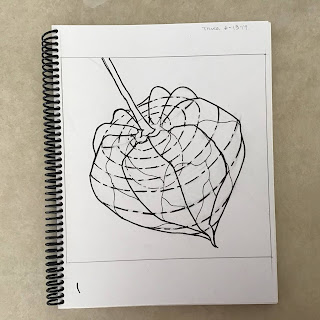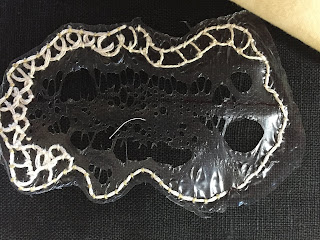
I wanted to make a piece using these two photos of my son Tyler and his girlfriend Carly I took last summer in New Mexico. The first image is a doorway in Socorro, NM, and the second is an overlook of the Rio Grande Gorge near Taos, NM.
The title of this piece is What's Next?


I printed the door image on Jacquard's regular inkjet Printing Cotton, and the second image was printed on Jacquard's Extrav-Organza silk organza. I printed the images on my small desktop Epson ET 3750 inkjet printer. Both fabrics have a freezer paper like backing so they feed pretty easily through the printer without jamming. I selected a regular print and paper setting on the printer. I did test runs with these papers previously, so I sort of knew what to expect. The prints were a bit on the light side, but the color reproduction was fairly accurate. I printed two of the silk organza images as it was pretty hard to see the print when placed on top the door image.

 I tried a couple of different layouts and decided I liked the second layout more. I am not sure that old teabag would have added a whole lot to the composition, so I tossed it out. Next came the hard part: figuring out how in the world to pull this all together. I started basting my pieces together, and added solid colored cotton behind the figures to make them more visible.
I tried a couple of different layouts and decided I liked the second layout more. I am not sure that old teabag would have added a whole lot to the composition, so I tossed it out. Next came the hard part: figuring out how in the world to pull this all together. I started basting my pieces together, and added solid colored cotton behind the figures to make them more visible.After finishing part of the hand stitching, I used my iPad, Apple Pencil, and the Adobe Sketch app to figure out the designs for the rest of the stitching. This process makes it so easy to visualize what it might actually look like. I used DMC and Weeks Dye Works cotton floss for all the hand embroidery.
 |
| Finished 10" x 12" |
 |
| Take a look at that hair: 1 strand at a time! |


































